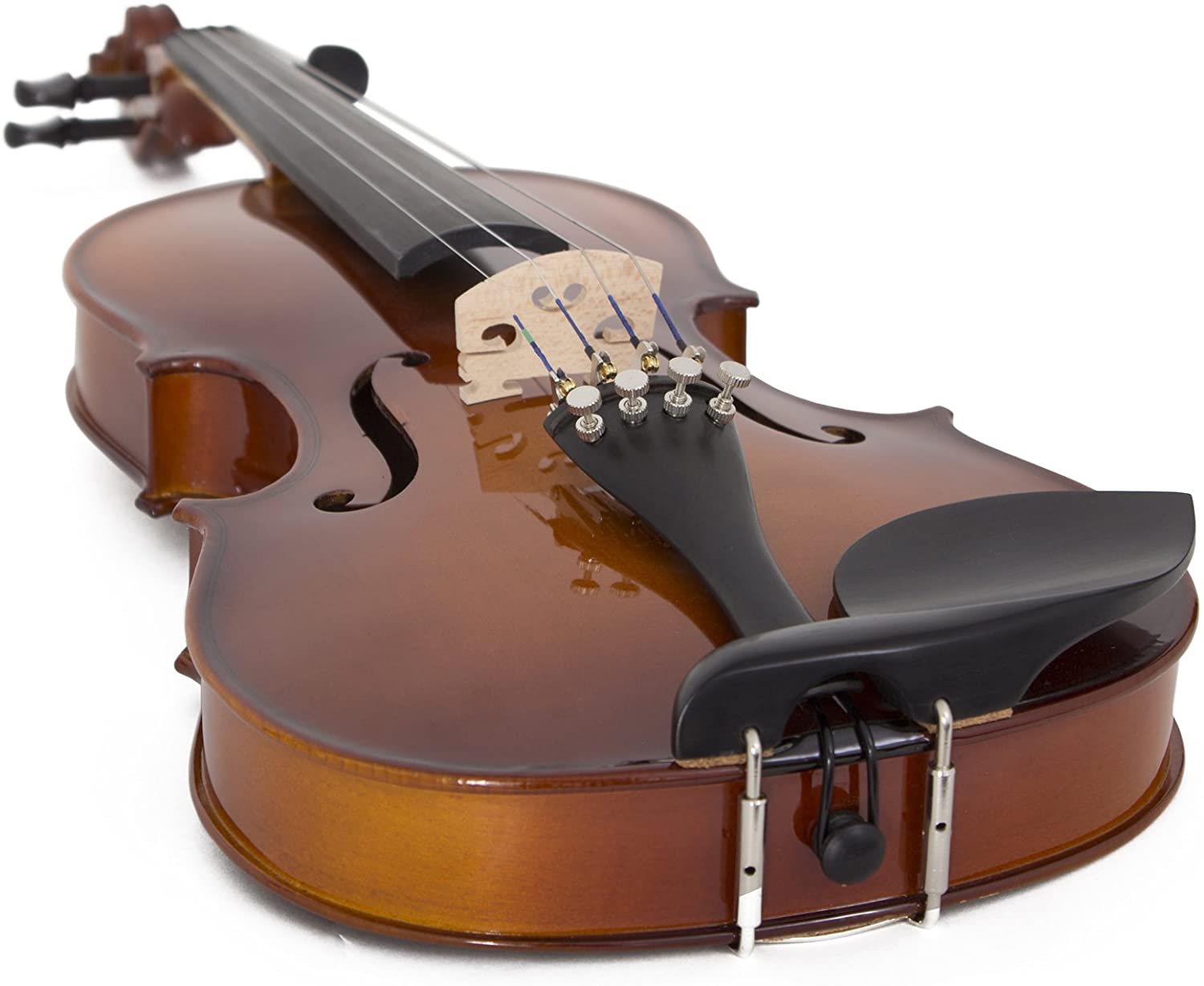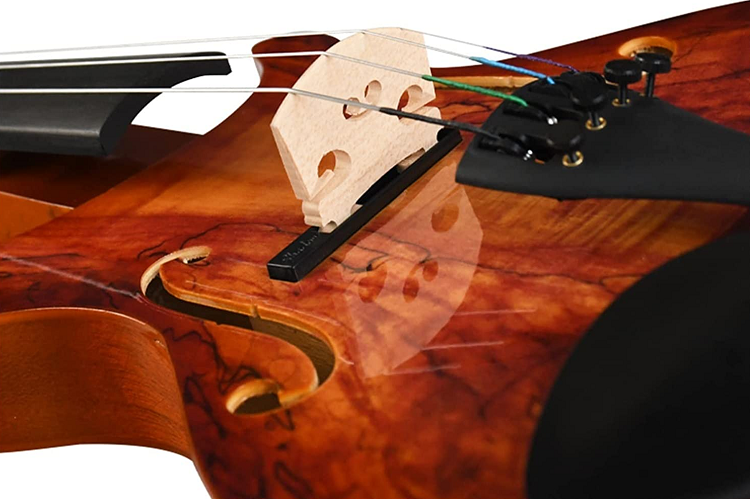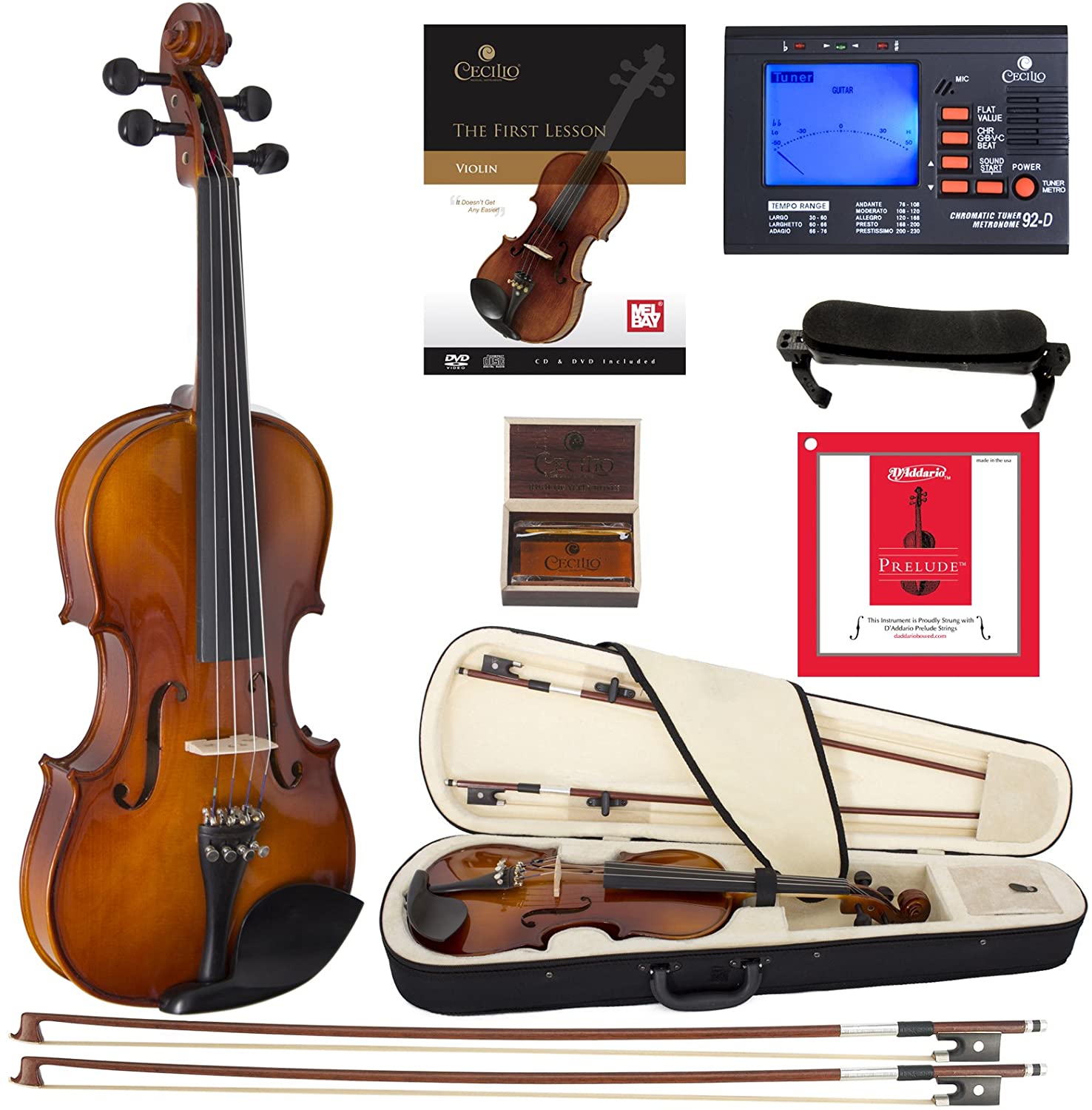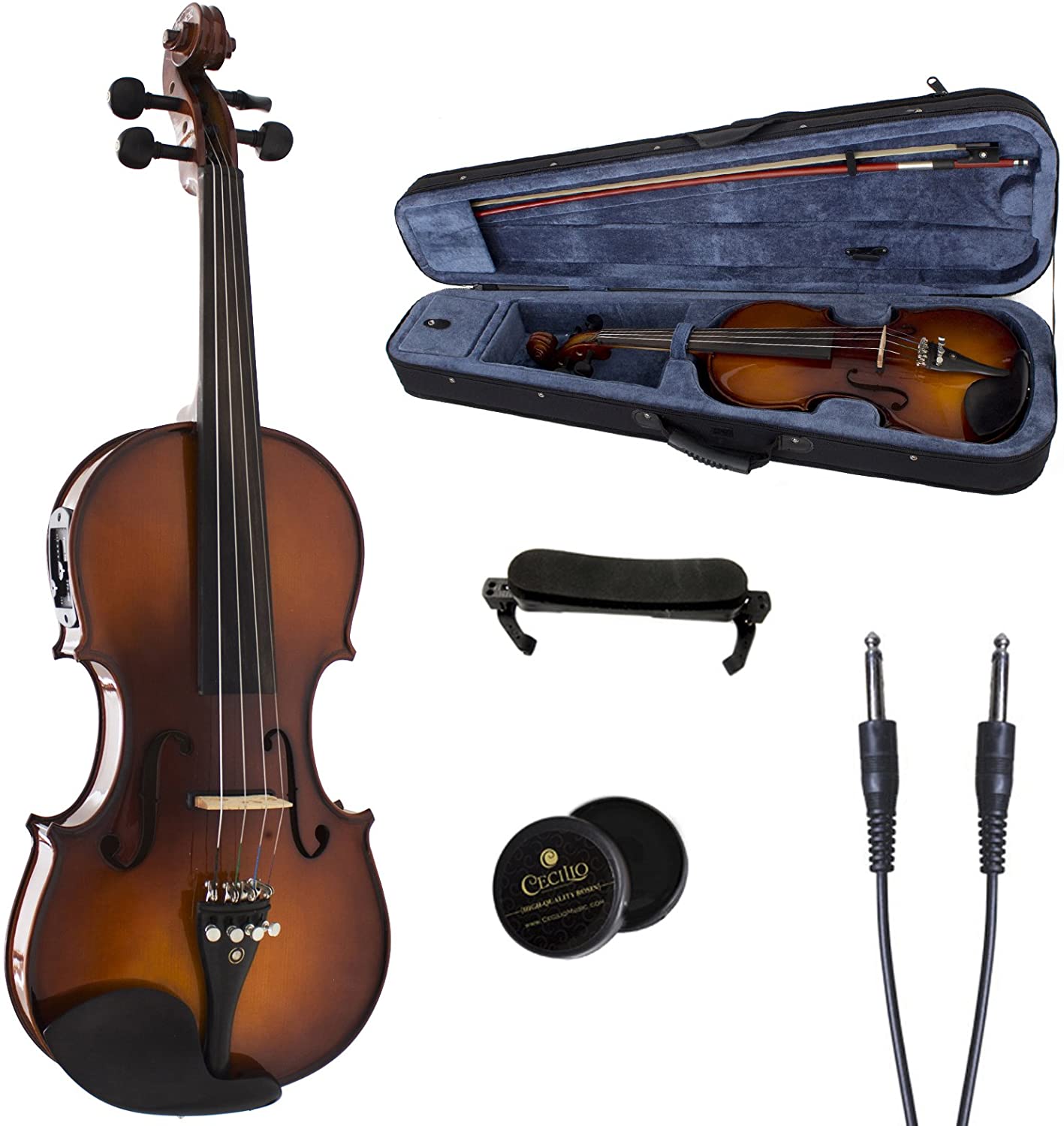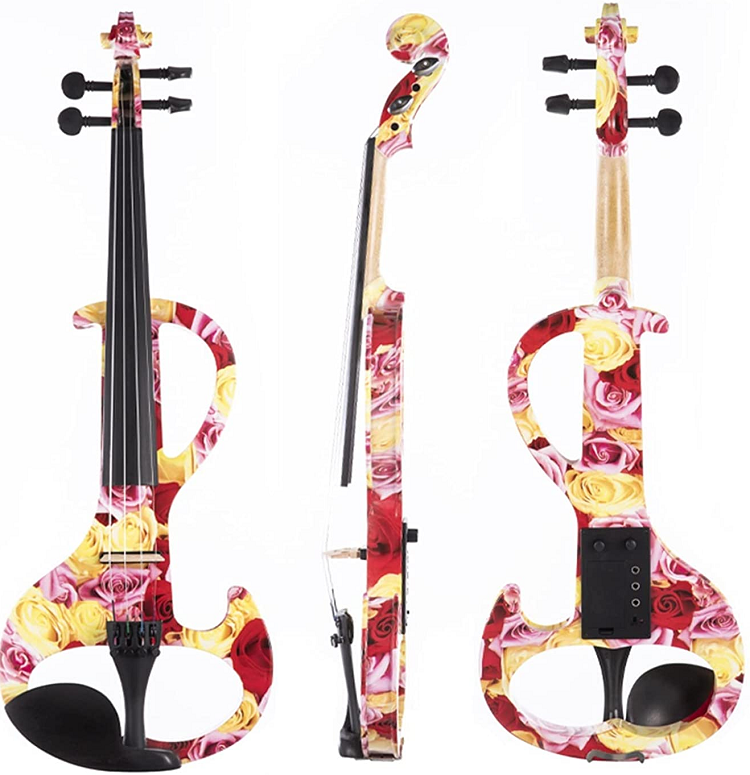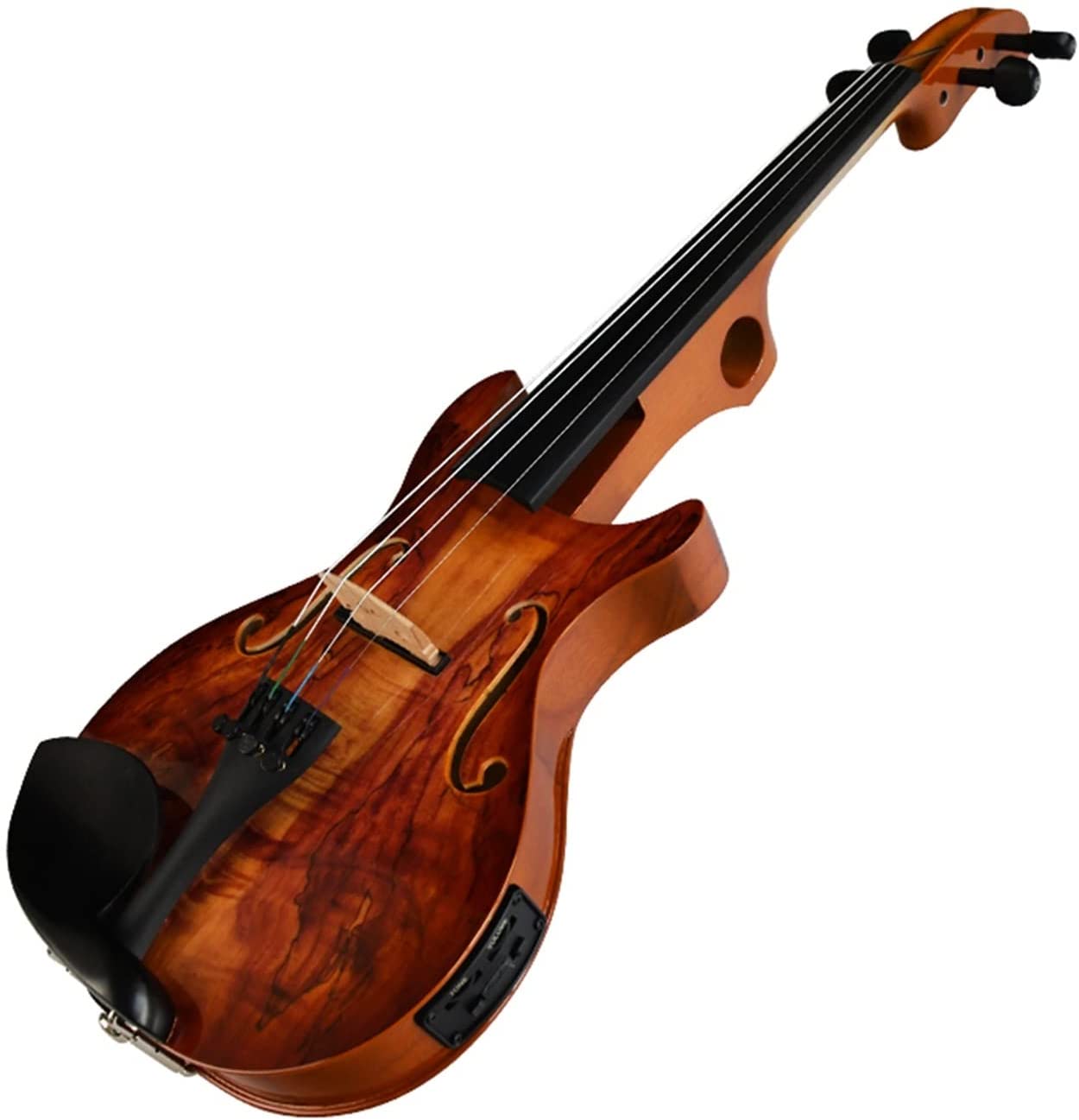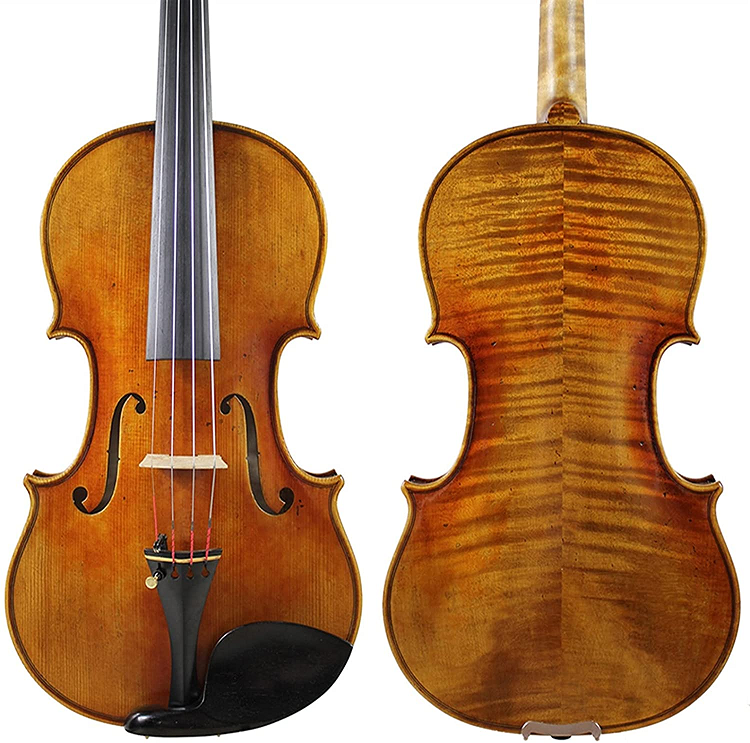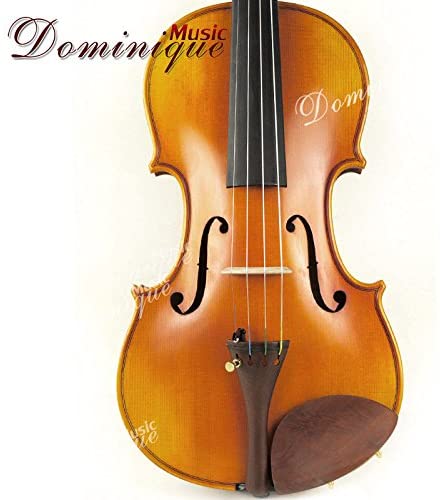- How to Find the Best 5 String Violins - April 19, 2022
- Top Violin Accessories to Consider - April 18, 2022
- Best Left-Handed Violins Guide - April 13, 2022
Summary: This best left-handed violins guide will explain the top picks for acoustic, electric, and hybrid left-handed violins.
If you are interested in playing the violin, but you are left-handed, you might worry about whether or not you can find an instrument suitable for you. You might also just want to learn the left-handed violin even though you already play the right-handed violin.
Bottomline Upfront
My top pick is the D Z Strad Left-Handed Acoustic Violin because it is from a reputable company with aged tonewoods and sounds perfect for intermediates and professionals. If you want the best of the best, this is the violin.
Selection Criteria
All of the instruments included in this left-handed guide are of good quality and were reviewed based on their construction, accessories, and reviews.
Best Left-Handed Violins Guide: How Left-Handed is Unique
Traditionally you place the violin over your left shoulder and balance the neck in your left hand. You use your right hand to move the violin bow up and down the strings.
Right-handed people can use their dominant arm to control their bowing action, which is essential in generating the right music. If you are right-handed, playing a traditional violin will be easier because you use your dominant arm to do the most crucial part.
So what about left-handed people? If your left hand is your dominant hand, you can apply your dominant hand to your bowing actions if you get a left-handed violin. The body is the same for a left-handed violin, with minor changes to the neck and interior.
Benefits of Finding the Best Left-Handed Violins
If you are left-handed, finding the best left-handed violin will make it much easier to learn how to play. You can use your violin bow with your dominant arm and just train your right hand to handle the fingering. This best left-handed violins guide will cover some of the most outstanding options you have today, options that were unavailable just a few decades prior.
However, if you play the left-handed violin, there are some considerations:
Suppose you play the left-handed violin and you want to participate in an orchestra setting. You will need special consideration so that your playing doesn’t interfere with the people playing around you.
If you’re going to play in a professional group or solo act, a left-handed violin will let you do that using your dominant hand.
If you are a beginner and plan on taking private instruction, make sure the teacher or tutoring you choose can teach you using a left-handed violin.
Best Left-Handed Violins Guide: Prices and Quality
Understanding the best left-handed violins means understanding the relationship between violin price and quality. As is the case with any stringed instrument, the materials used to construct the body are very important.
They can change the tone you get and the timbre. The way in which tonewoods are cut, how long they are aged, and how they are pieced together are very important.
It takes more time and effort to make strategic cuts from a single wood sheet.
It costs more to invest in harder, denser woods.
It costs more to allow tonewoods to age properly because manufacturers have to be in business for decades to let the wood age ten years or 20 years before they cut it into pieces.
It takes more labor and artistic skill to put a violin together by hand rather than cut the pieces with a machine.
These factors contribute to how long it takes to make a violin and how much it costs. There is a direct relationship between price and quality. The higher the price, the higher the quality. The lower the price, the lower the quality. If you find a left-handed violin that only costs a few hundred dollars, it is likely a student model.
This isn’t bad, it just means beginners should stick with that model. If you find something that is a few thousand dollars, it is probably a professional model which may or may not be helpful to you if you don’t have the skills to make the most out of that design.
Best Left-Handed Violins Guide: My Top Picks
Cecilio CVN-320L Acoustic
The Cecilio CVN-320L is an acoustic student model fitted for left-handed players. It comes with D’Addario strings, a Brazilwood bow, shoulder rest, metronome, and rosin.
I love that it has a hard case with beautiful cream lining inside; the cream lining gives a much classier look than a black or dark purple lining that often comes with student models. The body is constructed with maple and spruce.
While it does not come with extra strings, I like that it at least tells you what strings come standard, which many of the more expensive models do not. I also love the lesson book because it is ideal for beginners who want to start immediately but might not have classes or private lessons.
This is definitely meant for beginners, with construction and materials (particularly with the accessories) that work well for beginners and students but not for professionals. However, it also comes at the price of a beginner model, which is excellent for parents buying for younger musicians or adults on a budget.
Pros
- It comes from a well-known manufacturer of student instruments
- You get D’Addario strings
- It comes with a hard case, a shoulder rest, rosin, and two bows
- It comes with a beautiful varnish finish, so you get a natural wood color
Cons
- It only comes in full size
- You don’t have options for different finishes
Cecilio 4/4 CVNAE-330 Hybrid
Cecilio 4/4 CVNAE-330 offers a hybrid electric-acoustic violin with antique varnish. This left-handed violin includes accessories like a case, bow, cable, shoulder rest, and rosin.
Like all Cecilio products, this was manufactured in China and had the pieces put together and tested at two points along the shipping route.It comes with a foam-filled hard case in which to store all of the accessories, including the Brazilwood horsehair bow.
The instrument is made with maple for the back and sides, spruce on the top, and ebony for the pegs, fingerboard, and chin rest. While this model is a full size, there are fractional sizes of the same make and model available.
Pros
- It comes from a reputable brand
- Very inexpensive
- A hybrid model so you can practice electric or acoustic violin
- It has a beautiful antique varnish but is also available in pearl white or metallic black
Cons
- Meant for beginners, so the quality and materials are a beginner or student level
Shuntian Electric
The Shuntian Electric violin comes in a funky floral pattern on top of the maple, carbon fiber, and spruce body. This model is lightweight, at only 6 pounds. It has a carbon fiber tailpiece, four detachable tuners, a pickup, auxiliary cable, shoulder rest, extra strings, and a different bridge.
You get a Brazilwood bow too. I don’t care for the floral rose finish because it is a print rather than a solid color, but many people like it exclusively.
Pros
- Maple and spruce wood for the back, while the top has a mixture of carbon fiber, maple, and spruce
- It comes with accessories like a bow, headphones, cable, and a hard case
- It is handmade
Cons
- Meant for intermediates
- It only comes with the floral finish
Pwang Hybrid
Pwang offers a beautiful hybrid electric-acoustic left-handed violin. This is a great instrument for intermediates and professionals. It weighs six pounds with a multi-colored wooden finish. This instrument is stunning with a varnish finish. It arrives set up and ready to play.
You get a bow, 4-meter cable, and headphones so that you can start practicing electric or acoustic violin straight away. You also get a carrying case in which to store your accessories.
Pros
- It is a hybrid instrument, so you can play electric or acoustic
- It is lightweight
- Each violin is professionally set up by hand and inspected to ensure quality sound and appearance
Cons
- It only comes with an active pickup system, so you still have to buy other amplification accessories if you want them
Shutian Acoustic
Shutian makes a full-sized acoustic violin for left-handed players crafted with a beautiful oil varnish. This varnish brings out the natural color in the flamed back design of the Carpathian maple.
The Italian spruce is equally as stunning with its rich, warm colors. You get an ebony fingerboard and nails. It comes with a rectangular case and a Brazilwood bow. Each part was put together by hand. You can enjoy good sound quality.
Pros
- It is completely handmade so no parts are put together by machines
- The body is crafted from spruce, maple, and ebony
- The spruce was air-dried for years, perfect for professional or intermediate musicians who want quality
- It has a flamed back design
- You get a warm, consistent tone
Cons
- No information on the types of strings
- There is full size only
- It is expensive
D Z Strad Left-Handed Acoustic Violin
The cream of the crop is the D Z Strad Left-Handed Violin. This is the most expensive model because it is the most well-made. It is crafted with aged Engelmann spruce for the body, a spruce tree from Russia renowned for its hardness. You get a clear, open sound with this model and many accessories like the bow, case, and shoulder strap.
It is absolutely stunning, and its craftsmanship and its sound. All of the pegs are properly fitted, making it very easy to tune. The strings are high quality, and the instrument itself only weighs about 5 lb, so it’s very lightweight.
Pros
- Natural wood that has been aged for years
- Flamed back made with two pieces
- It comes with dominant strings
- Intermediate level bridge curvature
Cons
- Very expensive
FAQs
Answer: A left-handed violin will have the same price fluctuations as a traditional violin, ranging from a few hundred dollars for beginner models up to a few thousand dollars for professional models.
If you are looking for something that is not the cheapest option, one of the best options you can grow into and play for years, you can expect to spend around $500.
Answer: If you are working with a left-handed violin, you would still hold the violin bow in the exact same way only if you switch hands.
Answer: No, this won’t work. You have to invest in the best left-handed violin if you plan to play with your left hand because the interior designs are slightly different compared to a traditional violin.
Answer: You might invest in one of the best left-handed violence and decide that you want to change the strings that come standard with it, or you might play for a few months and break a string in which case you have to find a replacement.
Finding new strings isn’t particularly special, you use the same strings as you would on a right handed violin or traditional violin. This means you should invest in strings that you prefer based on their sound and quality, paying particular attention to the core material and any winding material.
Answer: No, it is not exactly the same. It is designed differently so that it can be played on the opposite shoulder. With a left-handed violin you place the violin on your right shoulder and use your left hand to move the bow.
Bottomline
My top pick for the best left-handed violins is the D Z Strad Left-Handed Acoustic Violin. This model has aged tonewood, is lightweight, eBay to tune, and perfect for intermediates or professionals looking to invest in a lifelong instrument.
That said, each of the models included here are good quality and well worth consideration.
Looking for more interesting readings? Check out:


